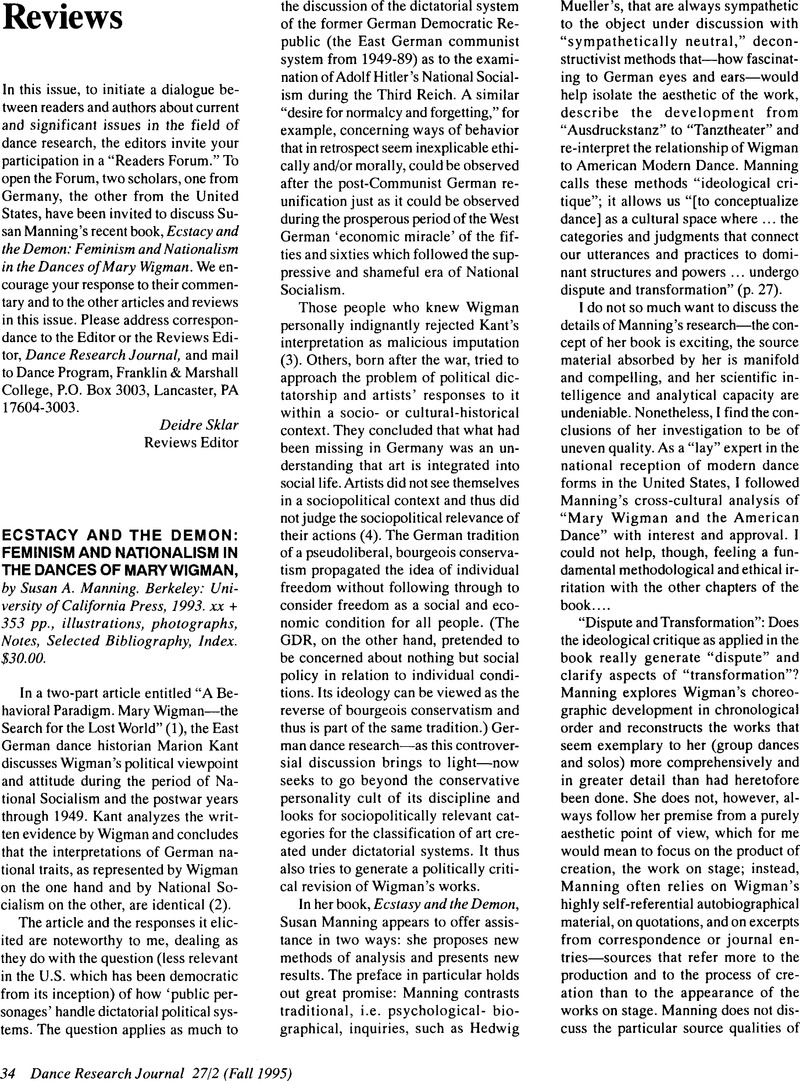Article contents
Ecstacy and the Demon: Feminism and Nationalism in the Dances of Mary Wigman, by Susan A. Manning. Berkeley: University of California Press, 1993. xx + 353 pp., illustrations, photographs, Notes, Selected Bibliography, Index. $30.00.
Published online by Cambridge University Press: 22 July 2014
Abstract

- Type
- Reviews
- Information
- Copyright
- Copyright © Congress on Research in Dance 1995
References
1. Tanzdrama 25.2 (1994): 14–19Google Scholar and 26.3/1994:16-21.
2. In this context, answers to the following questions are irrelevant: (1) whether Marion Kant (or any other scholar) should have presented critically the method of decoding literary remains of nonliterati in an appropriate scholarly manner; and (2) whether the author (ab)uses Wigman in the projection of her own coming to terms with the/her GDR past.
3. Tanzdrama 27.4 (1994): 30–32Google Scholar.
4. See, for example, Klein, Gabriele. “The Demystification of Myth. On the German in Mary Wigman's View of Life” (“Die Entzauberung des Mythos. Uber das Deutsche im Weltbild Mary Wigmans”). Tanzdrama 27.4 (1994): 28–30Google Scholar.
5. In the chapter “Mary Wigman and American Dance,” nationalist has a different, less totalitarian tinge; as is symptomatic of Manning's approach, she does not sufficiently realize the complexity of these shifts in interpretation.
- 1
- Cited by


